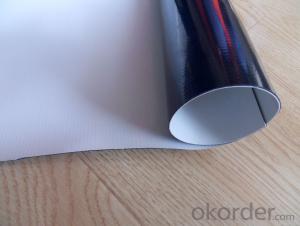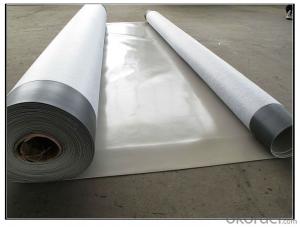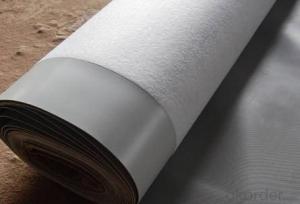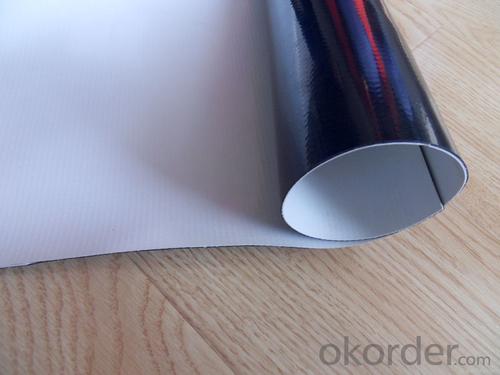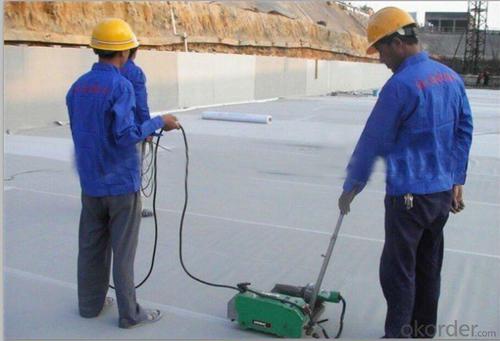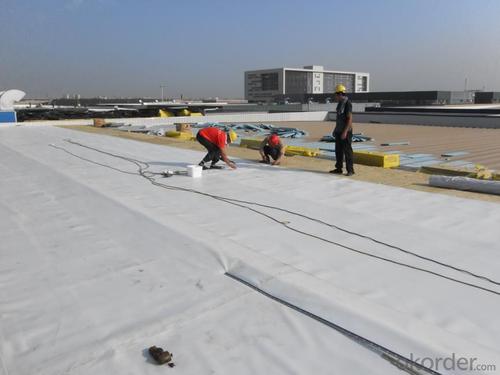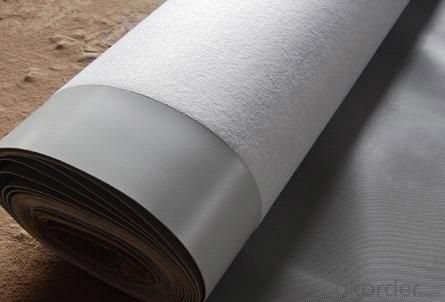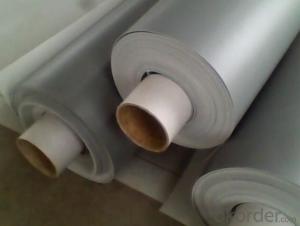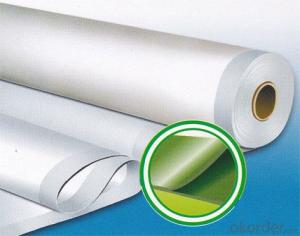PVC Waterproofing Sheets in 1.2mm with Polyester Reinforcement
- Loading Port:
- Shanghai
- Payment Terms:
- TT OR LC
- Min Order Qty:
- 20000 m²
- Supply Capability:
- 5000000 m²/month
OKorder Service Pledge
OKorder Financial Service
You Might Also Like
PVC Waterproofing Sheets in 1.2mm with Polyester Reinforcement
Product Description of PVC Waterproofing Sheets in 1.2mm with Polyester Reinforcement:
PVC Membrane Waterproof /Waterproofing membrane For Roof is a new polymer waterproof membrane. The PVC Membrane Waterproof /Waterproofing membrane For Roof raw material is polyvinyl chloride resin, mixed with plasticizer, filler, antioxygen, ultraviolet absorber and other auxiliaries.
Thickness: 1.2mm/1.5mm/1.8mm/2.0mm
Width:2050mm
Length:20m( Special specifications can be customized)
Size: 2.05mx20m
Color: white/grey, or any other colors.
Features of PVC Waterproofing Sheets in 1.2mm with Polyester Reinforcement:
1. Excellent anti-aging property.
2. Puncture- resistant.
3. Welding construction,
4. High tensile strength, good elongation, good dimensional stability.
5. Good plasticity.
6. It has self-extinguishing from fire property.
7. Materials surface is smooth, fast color, stain resistance.
8. More wide, Wastage become less when being used.
Classification of PVC Waterproofing Sheets in 1.2mm with Polyester Reinforcement:
1. N: Homogeneous PVC membrane
2. L: PVC membrane with fabric backing
3. W: Reinforced PVC membrane
Advantage of PVC Waterproofing Sheets in 1.2mm with Polyester Reinforcement:
1.) Mixing automation. Apply automatic temperature control automatic time control and automatic feed control.
2.) Extrusion equipment uses twin screw coextrusion. Screw temperature uses computer automatic temperature control system.
3.) Handpiece uses large width didhead extrusion equipment.
4.) Sophisticated three-roller calender equipment. The space between equiment is controlled by automation system.
Technical Data of PVC Waterproofing Sheets in 1.2mm with Polyester Reinforcement:
No. | Item | Model Ⅱ | |
1 | Tensile Strength Mpa ≥ | 12.0 | |
2 | Elongation at break% ≥ | 250 | |
3 | Shrinkage rate % ≤ | 2.0 | |
4 | Flexibility at low temperature | No crackle at -25oC | |
5 | Water tightness | Watertight | |
6 | Puncture resistance | Watertight | |
7 | Heat aging treatment | Appearance | Free from bubble, crack, cohesion and void |
Change rate of tensile strength % | +20oC | ||
Change rate of elongation at break | |||
Flexibility at low temperature | No crack at -20oC | ||
8 | Chemical corrosion resistance | Change rate of tensile strength % | +20 |
Change rate of elongation at break | |||
Flexibility at low temperature | No crack at -20oC | ||
9 | Artificial weathering | Change rate of tensile strength % | +20 |
Change rate of elongation at break | |||
Flexibility at low temperature | No crack at -20oC | ||
Application of PVC Waterproofing Sheets in 1.2mm with Polyester Reinforcement:
1) All kinds of roofs, such as steel structure roof, planted roof etc.
2) Underground engineering, such as building basement, subways, tunnels, air raid shelter, etc.
3) Other projects like artificial lake, dam, water reservoir, grain storehouse, etc.
Images of PVC Waterproofing Sheets in 1.2mm with Polyester Reinforcement:
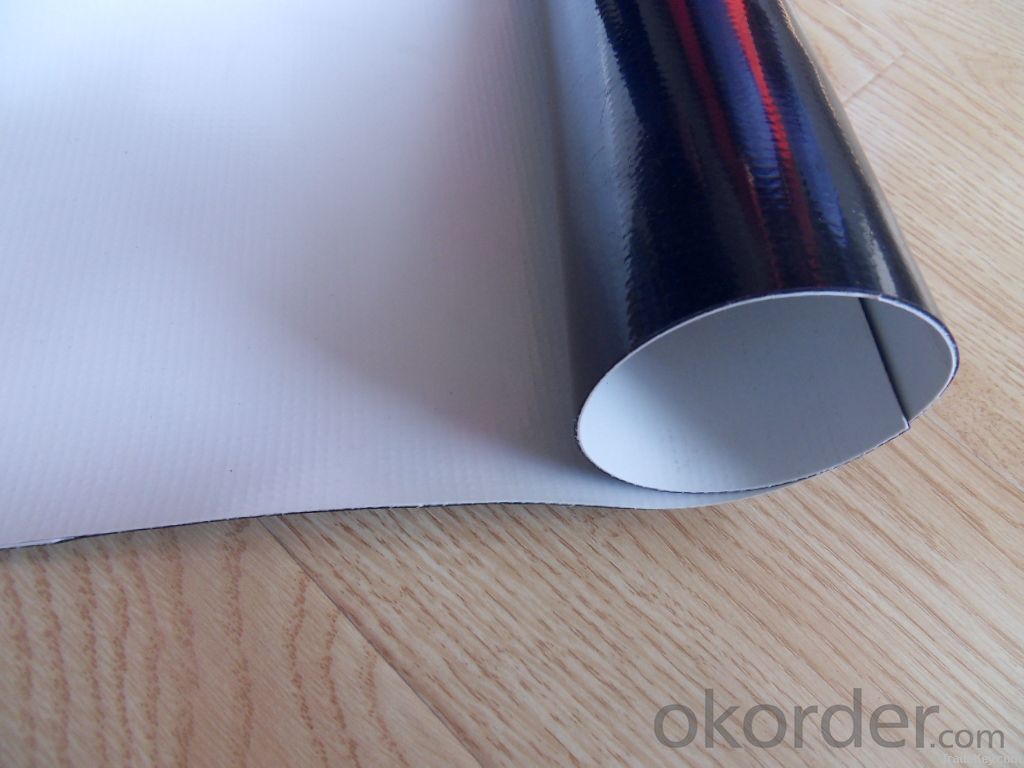
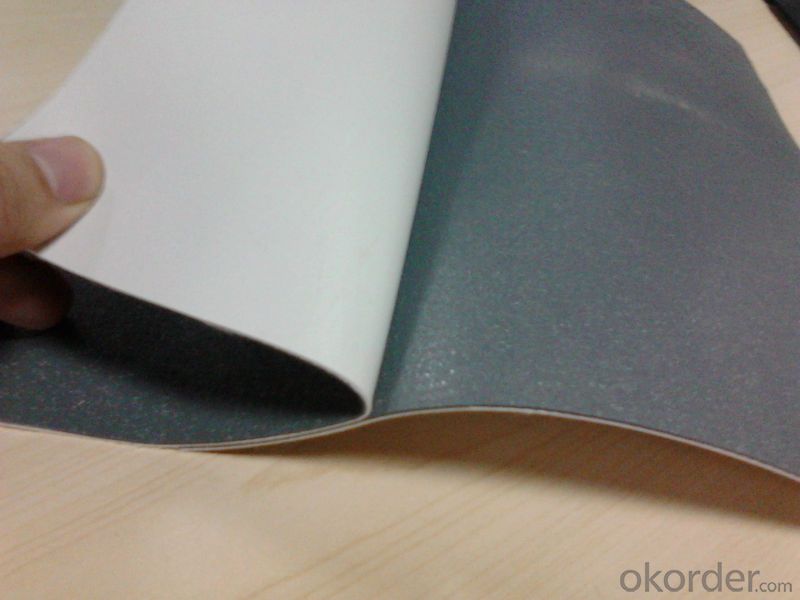
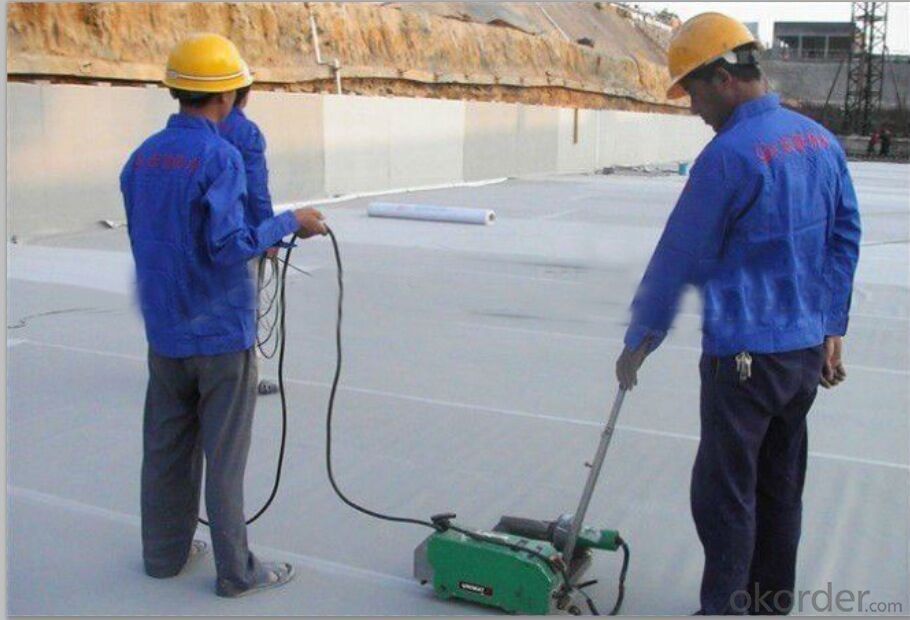
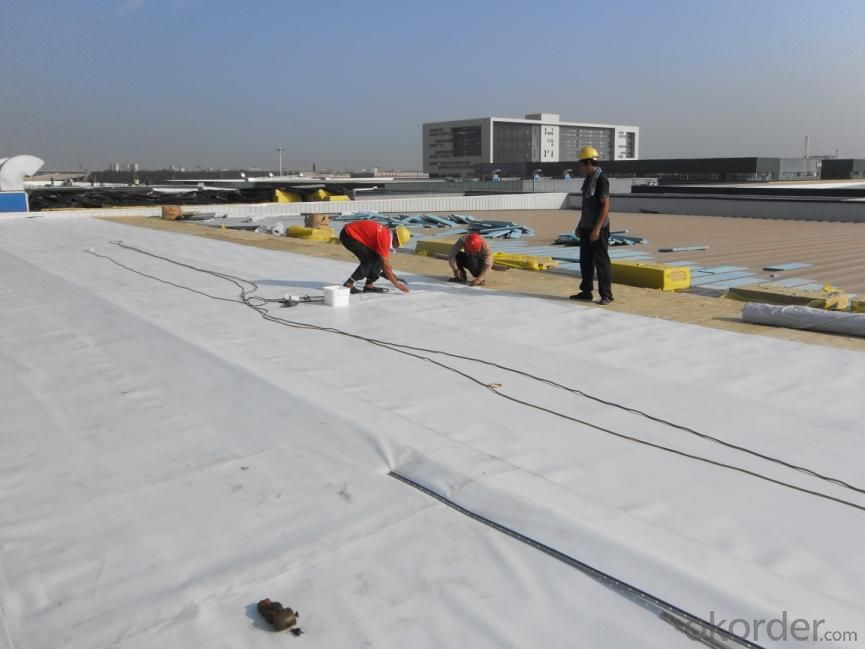
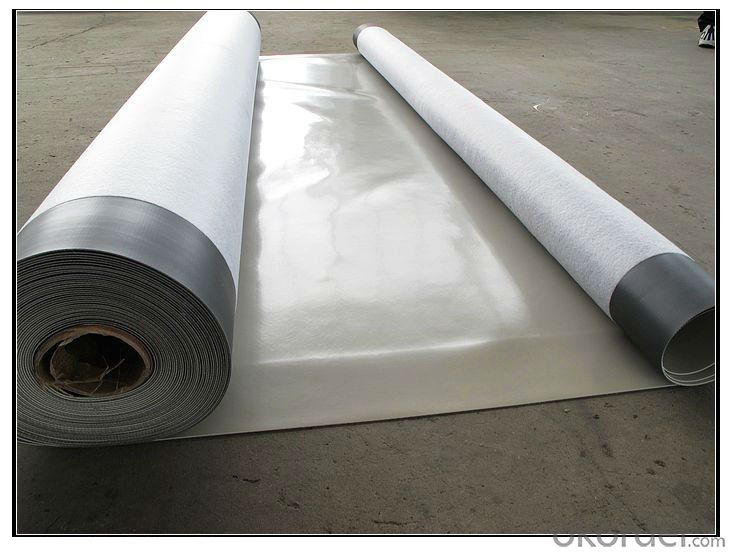
FAQ:
1. Can you produce 4m width?
Yes, no problem for us. We have four bases in China, largest one in this field.
2. How many quantity in one 20'' container for 1.2mm and 1.5mm?
480rolls, 11520m2 for 1.2mm and 400rolls, 9600m2 for 1.5mm
3. Can you provide free samples?
Yes, our samples are free, but express fees usually on buyer's account.
- Q: Can a waterproofing membrane be used for underground storage facilities?
- Underground storage facilities can benefit greatly from the use of waterproofing membranes. These membranes are specifically designed to keep water out, and therefore are an excellent choice for structures situated below ground, like storage facilities. Typically crafted from materials such as bitumen, rubber, or polyethylene, these membranes possess exceptional resistance to water penetration. By implementing a waterproofing membrane on the walls and floor of an underground storage facility, a protective barrier is established, preventing water from seeping in and safeguarding stored goods against moisture damage. Moreover, the presence of a waterproofing membrane also inhibits the growth of mold and mildew, which can pose risks to both the structural integrity of the facility and the items housed within. In conclusion, the utilization of a waterproofing membrane is a highly reliable and effective method for guaranteeing the long-lasting and sturdy nature of an underground storage facility.
- Q: Can a waterproofing membrane be used on roofs with slope?
- Roofs with slope can use a waterproofing membrane. It is commonly applied on sloped roofs to add an extra layer of protection against water infiltration. The membrane is typically placed beneath the roofing materials and acts as a barrier to stop water from seeping into the roof structure. This is particularly crucial for sloped roofs as water runoff is faster and may lead to leaks or damage. The waterproofing membrane is designed to be flexible and is able to adapt to the roof's slope without compromising its effectiveness. Moreover, it also enhances the roof's durability and lifespan by preventing moisture-related problems like rot or mold growth.
- Q: Can a waterproofing membrane be used for wastewater treatment plants or sewage facilities?
- Yes, a waterproofing membrane can be used for wastewater treatment plants or sewage facilities. These facilities often require protection against water infiltration and leakage due to the presence of large amounts of water and potentially corrosive substances. A waterproofing membrane is a versatile solution that can provide a barrier against water penetration, helping to prevent damage to the structure and ensure the proper functioning of the facility. It can be applied to various areas such as walls, floors, roofs, and tanks, helping to maintain a watertight environment and prolong the lifespan of the facility. Additionally, some waterproofing membranes are specifically designed to withstand harsh chemicals, making them suitable for wastewater treatment plants and sewage facilities where corrosive substances may be present.
- Q: Can waterproofing membranes be used on outdoor fountains?
- Indeed, outdoor fountains can benefit from the application of waterproofing membranes. The primary purpose of these membranes is to establish a protective shield that thwarts water infiltration, rendering them an excellent choice for safeguarding outdoor fountains against water-induced harm. Typically composed of water-resistant materials like rubber, PVC, or bitumen, these membranes effectively seal the fountain's structure. By applying a waterproofing membrane to an outdoor fountain, one can extend its longevity, avert leaks, and shield it from the elements.
- Q: How does a waterproofing membrane handle water infiltration from below?
- A waterproofing membrane is designed to effectively handle water infiltration from below by creating a barrier that prevents water from seeping through the surface it is applied to. The membrane is typically made of a flexible and durable material that can resist water pressure and remain intact. It is installed in such a way that it covers the entire surface area, forming a continuous and impermeable layer. This prevents water from penetrating through the membrane and reaching the underlying structure, effectively protecting it from potential damage caused by water infiltration.
- Q: Can a waterproofing membrane be used for a parking lot pavement?
- Yes, a waterproofing membrane can be used for a parking lot pavement. Waterproofing membranes are designed to protect surfaces from water infiltration and can be applied to various surfaces, including parking lot pavements. This can help prevent water damage, increase the lifespan of the pavement, and reduce the need for costly repairs.
- Q: Can a waterproofing membrane be used on balconies and decks?
- Yes, a waterproofing membrane can be used on balconies and decks. In fact, it is highly recommended to install a waterproofing membrane to protect these areas from water damage. Balconies and decks are exposed to rain, snow, and other weather elements, which can cause water to seep into the structure and lead to issues such as rotting, mold growth, and structural damage. A waterproofing membrane provides a protective barrier that prevents water from penetrating the surface and directs it away from the structure. It is typically applied underneath the surface material, such as tiles or decking, and acts as a waterproof layer. This helps to extend the lifespan of the balcony or deck, ensuring its durability and maintaining its aesthetic appeal. Additionally, using a waterproofing membrane can also prevent water from dripping down to the areas below, which is particularly important for balconies located above living spaces. Overall, using a waterproofing membrane is an effective solution to ensure the longevity and functionality of balconies and decks.
- Q: Can a waterproofing membrane be used on both interior and exterior surfaces of a structure?
- Yes, a waterproofing membrane can be used on both interior and exterior surfaces of a structure. It is designed to create a barrier that prevents water penetration, whether it is applied on the inside or outside of a building.
- Q: Are waterproofing membranes breathable?
- Yes, waterproofing membranes can be breathable. Breathability refers to the ability of a material to allow air or water vapor to pass through it while still preventing liquid water from penetrating. Many modern waterproofing membranes are designed to be breathable, allowing moisture vapor to escape from within while still keeping out liquid water. This is especially important in applications such as waterproof clothing, outdoor gear, or building materials where moisture control is necessary to ensure comfort and prevent the growth of mold or mildew. Breathable waterproofing membranes typically use advanced technologies such as microporous membranes or coatings that allow water vapor molecules to pass through while blocking larger liquid water molecules.
- Q: Are waterproofing membranes resistant to ponding water?
- Yes, waterproofing membranes are designed to be resistant to ponding water. These membranes create a barrier that prevents water from seeping through and causing damage to the underlying structure.
Send your message to us
PVC Waterproofing Sheets in 1.2mm with Polyester Reinforcement
- Loading Port:
- Shanghai
- Payment Terms:
- TT OR LC
- Min Order Qty:
- 20000 m²
- Supply Capability:
- 5000000 m²/month
OKorder Service Pledge
OKorder Financial Service
Similar products
Hot products
Hot Searches
Related keywords
